THE TOP 4 MOST REQUESTED VERANDAH FEATURES MODULAR HOME CLIENTS ASK FOR!
It's the middle of winter and let’s admit it, who doesn’t really look forward to summer. Just think of those warm summer evenings spent sitting on your verandah after a hard day’s work or the weekend get together BBQ with steaks, snags, and a few coldies.
Outdoor living is central to most of our lives and of course, with the weather we get in Australia, who doesn’t want to spend as much time outside as possible. And the biggest requirement for outdoor living is a verandah!
So, in the interest of summer, we thought we should put together a list of the most requested features our clients ask for when they are looking at verandahs. Please read on to check these points out.
VERANDAH SIZE

Needless to say, verandahs come in all shapes and sizes depending on the size of your land, the design of your home and your lifestyle. What we find is that we can break the verandah widths down to some fairly standard sizes;
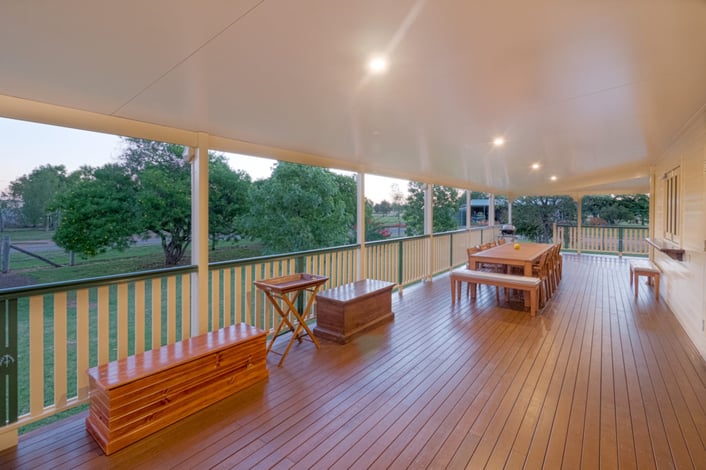
3.0 - 4.0m WIDE VERANDAHS.
These width verandahs provide very functional areas that are great for entertaining, BBQ’s and an outdoor bar. We find that clients with this size verandah will use their verandah as de-facto living area.
UNDER 2.0m – 3.0m
This size verandah is more suited to those on a budget and who prefer to sit on the verandah in the afternoon enjoying a cold beverage. Lots of seats, hammocks and decorations.
UNDER 2.0m WIDE VERANDAHS wide verandahs
More commonly used as a shading device or to improve the aesthetics of the home. We find that due to narrowness of the verandah the functionality of the verandah is restricted.
INSULATED CEILINGS
Most verandahs are constructed with unlined ceilings and exposed rafters and trusses with little or no insulation rating. This means that, while it is more cost effective, in the heat of the day & with little or no air movement your lovely verandah transforms into a hot box.

To combat this, we recommend using ‘Insulated Panel’ ceilings. Whilst they are normally more expensive than the alternative you will get a lovely lined ceiling that is easy to clean and has great insulative qualities.
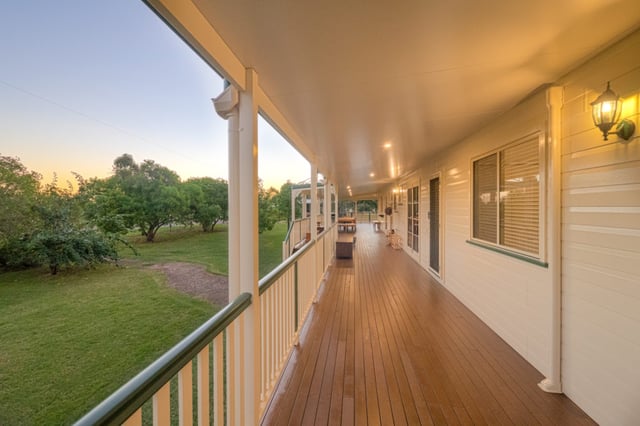
PINE, HARDWOOD OR COMPOSITE DECKING?
Decking – it can make or break a verandah. Along with being an essential part of the look of your verandah, it is also the most maintenance intensive. Timber, being a natural product, is prone to swelling and shrinkage depending on the season. Oiling your timber deck regularly is a must to keep it looking pristine!
Pine Decking
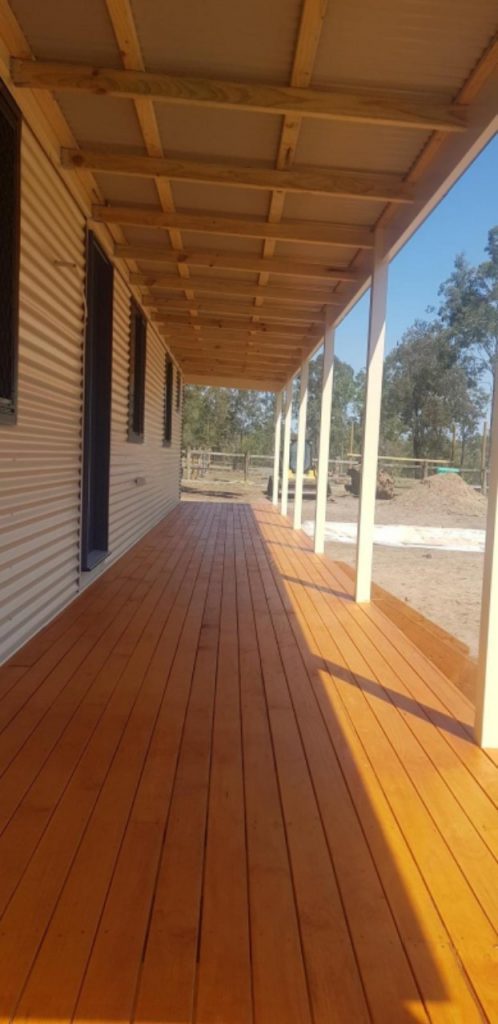
Lighter in colour and more cost-effective. Being a natural timber, it will only look as good as how much you care for it. Keep it well oiled and clean and you can have a beautiful deck for a lifetime!
HARDWOOD
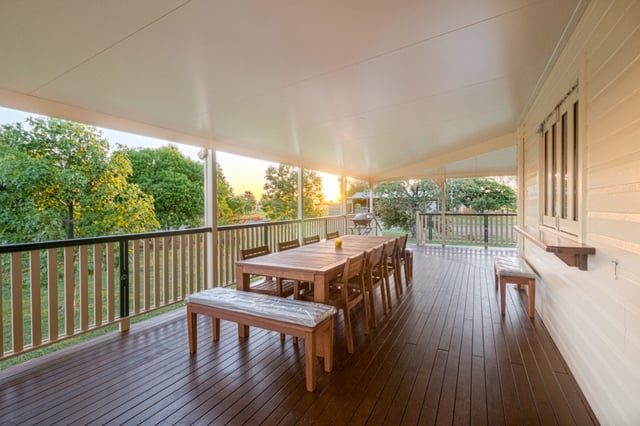 Verandah outdoor dining
Verandah outdoor dining
As the name suggests, hardwood is far more durable than pine. Generally, hardwood decks have a darker and deeper colour range, the most common species being Kwila or Merbau which has a deep red colouring.
COMPOSITE
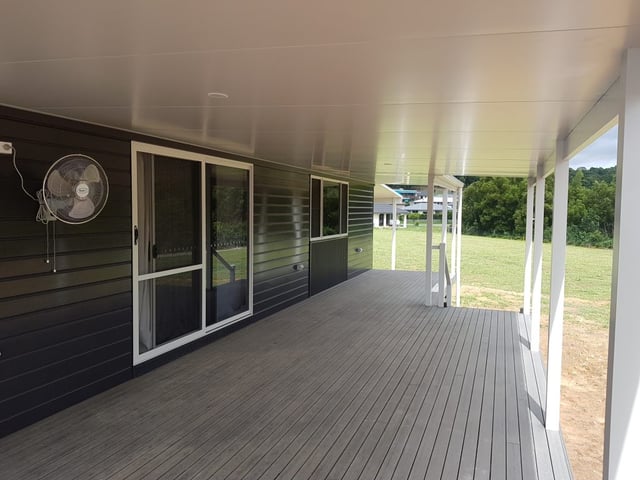
Composite decking is almost maintenance free and extremely durable. Being a manufactured product, this means you have a far greater range of colours to choose from. The trade off here is that it isn’t natural timber. This means you will lose the shine and richness of natural timber.
SCREENING
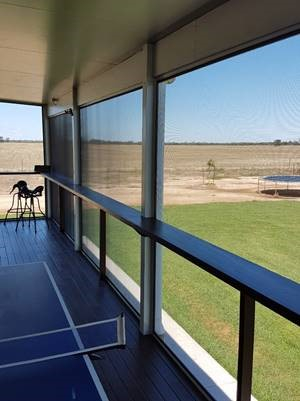
Screening in of verandahs is a frequent request – especially for those out in the bush or on large acreages. A well lit verandah stands out like a lighthouse to all those moths and bugs for miles and in the middle of a summer night your verandah can soon turn into bug paradise!
There is a vast range of different screening options available to you from roll up screens to permanent fixed screens or crim-mesh to help keep those bugs out and save a whole lot of hand waving and frustration!
We really hope you have enjoyed reading this post and have found it informative. Don't hesitate contact us on 1800 688 044 or send us a message by clicking here.


